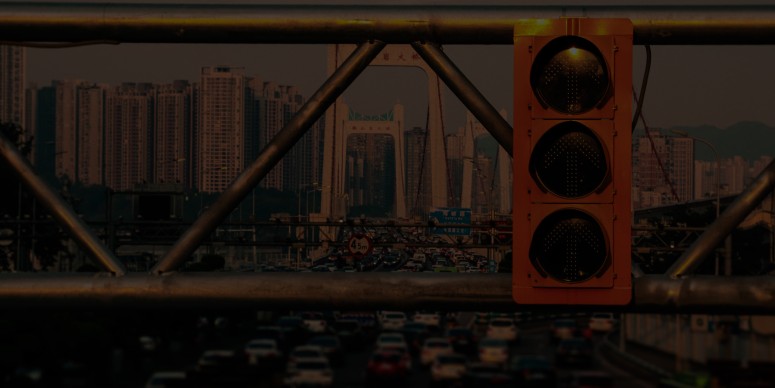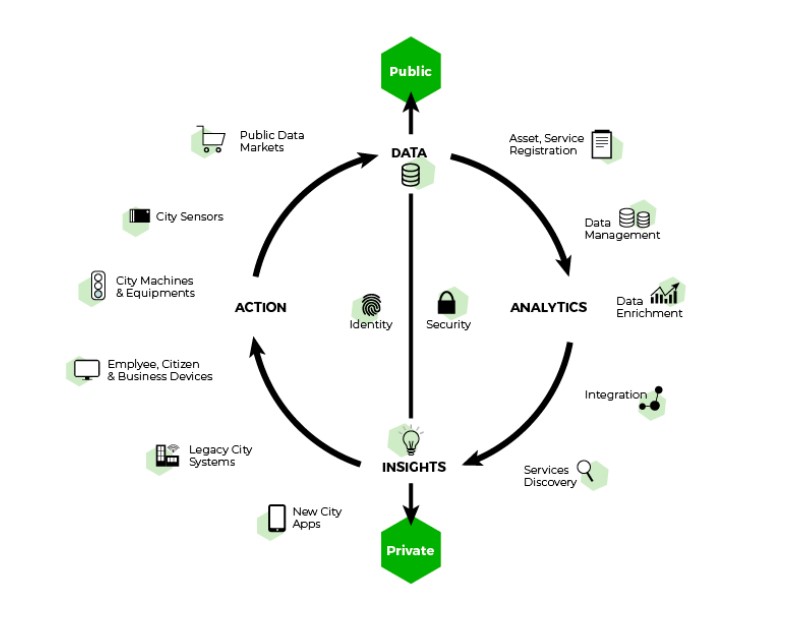
Zigurat Global Institute of Technology
Blog / Leadership & Transformation
Categories

In this post, we're going to explore how it's the power of data that will help the smart cities become a reality. Read further to find out more about the uses of data analytics in smart cities.
The smart city is an interconnected network of devices that gather, store, share and communicate data, all that with an aim to improve efficiencies across a variety of functions. That data is an important source of information to design resource-efficient and livable cities for people. To make sense of all the data coming from disparate sources: geospatial data, traffic data, foot traffic data, number of vehicles, crime statistics, etc. we need data analytics. Through complex algorithms, city stakeholders can draw connections across disparate sources to reveal useful information.
Data is the common ground, the lifeblood that smart cities could use to anticipate urban phenomena in new ways and base their long-term decisions on. For that to succeed, we must establish three layers of data. First comes the actual technological infrastructure: the smartphones, sensors and other networks of connected devices. The second layer is about the applications that make use of the data gathered through different devices and the data-analysis capabilities. This is where technology providers and app developers come in. The third layer refers to the actual adoption and usage of that data by the general public. In this layer, it’s the applications that interact with the users and manage to change something in their behaviour.
There are already huge amounts of data in our cities. What holds us back, however, is that much of this data is serving specific needs, rather than shared and contributing to the common good. This includes both private and public sector data.
That’s why creating a smart city depends on how well the organizations can share and analyze the data. The ability to share key information in real-time is key for all businesses and organizations to develop the applications that support automation and the software solutions that form the ‘smart’ infrastructure. In that context, we can conclude that open data is one of the main axes of the new paradigm of governance and necessary also for the private sector to make the best use of data available in cities.

Data analytics has already proven itself valuable in different fields when it comes to smart city development.
Data analytics can do make the entire transport network more efficient, reducing the degree of congestion and delays. Data analytics can make public transport more efficient from an operational standpoint and anticipate the demand for transport during weekends or special events. In this case it could be ramped up or reduced, depending on the predicted demand.
One of the examples of how data is changing the way we move around cities, is from Nanjing, China, where the city council installed sensors into 10,000 taxis, 7,000 buses and 1 million private cars. The Nanjing Information Center gathers daily data for the experts to analyze traffic data and send updates to commuters on their smartphones. Thanks to these data insights, the government has created new traffic routes to improve congestion, without spending money on new roads.
Will smart cities be able to prevent crime before it happens? Data analytics brings alternatives to arming and expanding the police force when it comes to fighting crime. With analytics, it’s possible to identify areas and times where crime is frequent and deploy the police to these areas before the crime even happens.
There are already cities that are trying out data analytics for crime prevention and many of them have come back with positive results, such as London, Chicago, New York and Los Angeles. For example, The Chicago Police Department relies on its Strategic Decision Support Centers (SDSCs) that connect features like predictive mapping and policing, gunshot detection, surveillance cameras and citizen tips.
New York has also its own Real-Time Crime Center that has access to more than a decade's worth of criminal complaints, arrests and 911 call records — a total of 120 million incidents that would otherwise be siloed. In that center, a reconciliation engine pulls data together based on meaning and relationships and presents information to the user in an actionable format. It also combines public information databases with records about licenses and arrest records. And gives access to a real-time 911 dashboard that compares caller needs with police resources.
Data analytics can also be used for useful insights into economic performance and comparing one city to others. Mastercard and Dublin City Council (DCC) have partnered to develop new insights on the spending patterns of Dubliners and tourists, as well as comparing the capital’s performance to the whole of Ireland. Their product City Insights shows detailed spending patterns in different parts of the city each day. Driving innovation opportunities in transit, planning and tourism and engaging with Dublin’s thriving startup ecosystem are also key elements in this partnership.
A key use-case for data analytics is managing assets. A system of sensors that collect valuable data enables the city council to understand the citizens better and improve the public service according to the actual needs of the citizens. Thanks to data insights, the resources could be better allocated to enhance the efficiency of the management system.
As a successful example, we have the City of Marion in South Australia that since December 2017, has deployed smart sensors in playgrounds and parks. The insights from the data collected by these sensors can be used to maintain the current park equipment, improve the planning of future parks and the public experience in general by understanding how people use city assets. It is also hoped that such an asset management approach will contribute to the reduction of public liability. When the sensor detects that specific equipment is not being used or less used, it alerts the council that something might be wrong permitting them to take action immediately.
As we have seen above, there is immense potential for the better use of data across all city services and operations. Data analytics offers many opportunities to companies to develop new solutions and applications that make cities more sustainable, efficient and healthier for citizens.
Find out more about data in cities and its use for potential projects!

Zigurat Global Institute of Technology